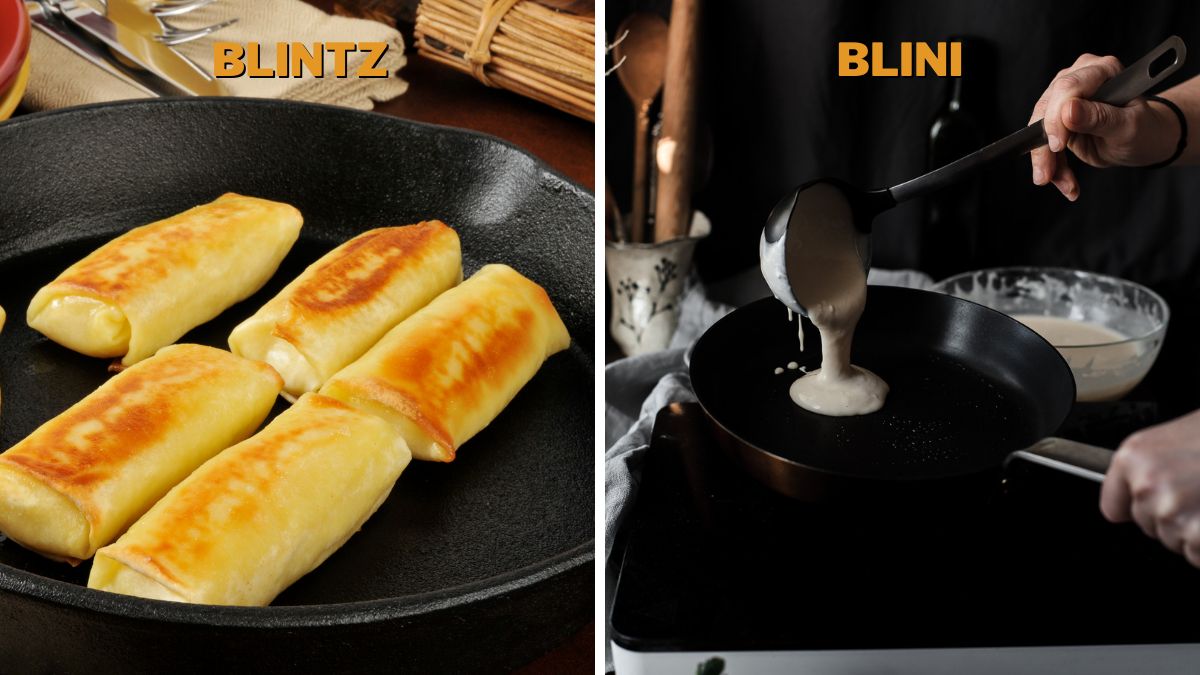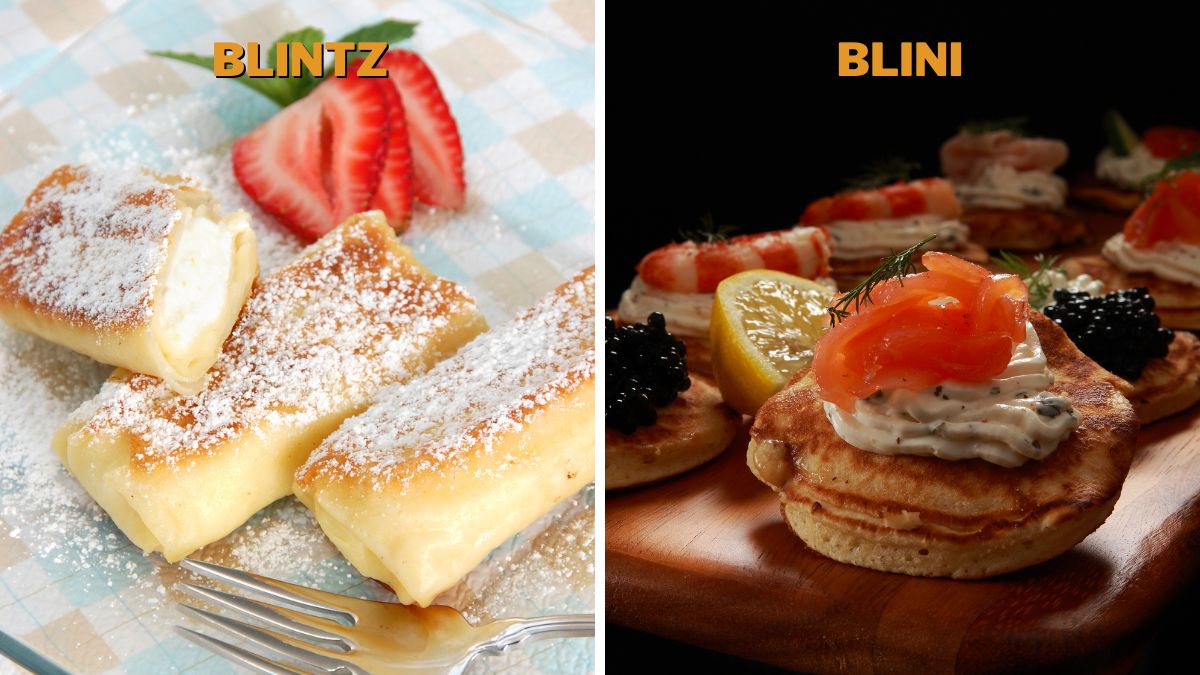Blintz vs. Blini: Differences & Which Is Better?

Blintz and blini are tasty delights, very similar but still different enough to be separate desserts. In addition to “the European version of pancakes,” there are many other things that define these two pan-pastries. So, what are the differences between blintz and blini?
Blintz originates in Russia, and it is a small pancake. It is made with wheat flour and is usually served with melted butter, sour cream (kisla Smetana), and caviar or smoked salmon. Blini is a very thin pancake made of buckwheat flour. It is often filled with sweet cheese and folded or baked and served with sour cream or a sweet sauce.
Since they are both very similar but served differently, which is the key difference between blintz and blini, you can easily confuse them and combine them the wrong way. So, in the following paragraphs, I will explain the differences between blintz and blini, how they are served, and how they are prepared.
Blintz vs. Blini: Differences
Although they are both desserts and similar in appearance and taste, blintz and blini are different in more than a few aspects.
Origin
Both blini and blintz originate in Eastern Europe. Blintz originated in Russia, while the origin of blini remains shrouded in mystery. They are assumed to have originated in Russia, Belarus, or Ukraine.
Blintzes are connected to the Jewish community in Russia and Ukraine. In fact, the word “blintz” is a Jewish word meaning panckaes.
Both blinis and blintzes appeared in pre-Christian times and are totem-inspired. Namely, the then Eastern Slavic times worshipped the sun, so it is believed that they made a dessert pan pastry that was meant to look like the sum as a symbol of honoring the life-giving star.
Of course, since blintzes and blinis appeared so long ago, these assumptions may not be correct, but they still make up a nice story.
Anyway, both blintzes and blinis are counterparts to the French crepe and appear and taste very similar. Blintzes and blinis also have a South Slavic counterpart, Palachinke/Palachinki, and it is believed to have originated with the same purpose as the blintzes and blinis.
Preparation and Ingredients
Often called “the pearl of Eastern European cuisine,” the blinis are made with the simplest of ingredients every household has at any given moment. They are straightforward and complex at the same time.
All you need to make a batch of blini are wheat flour, milk, and eggs. Everything is mixed together and then scooped with a ladle and is either fried or baked.
Most often, the blintzes are baked on a non-sticking pan, but they are also deep-fried. They are mostly served with cheese and sour cream, jam, or sweet sauce.
Blintzes are very similar to blinis, but instead of buckwheat flour, they are made with wheat flour. Therefore they turn out a bit smoother than blini. Blinis are always baked, whereas blintzes are also fried in butter.
Blinis are traditionally served with caviar, smoked salmon, sour cream, and cheese. Since they are Russian and caviar and salmon are easy to find there, so they are the traditional supplements to blinis. So when the meals are done, blintz is considered sweet, and blini savory dish.

Both blintzes and blinis are highly variable and can have many different forms.
Taste
Generally, blintzes and blinis are considered neutral-tasting since they don’t contain either sugar or salt. Blini without topping is a little bit sweeter than blintz thanks to buckwheat. What is more, they contain eggs and milk, so that has to count for something, and it does.
Even though they are not expressively salty or sweet, blinis and blitzes have a certain milky and buttery taste. Although they contain eggs, they don’t exhibit that typical, heavy egg flavor, but it mashes with the milk, producing a buttery and creamy sensation.
Texture-wise, blintzes are the smoother and gentler ones. Since blinis use buckwheat flour, they tend to be a little coarser and less elastic; however, the difference is not so expressive to bother you.
Generally, blintz and blini acquire the taste of the ingredients they are served with, and they are rarely consumed with nothing on or in them.
They can be smeared, rolled, or flipped. Blintzes are mostly rolled, and blini are most commonly flipped.
Variations
Since the blini and blintz batters are very simple with no restrictive ingredients, both batters are very variable. They can contain cream cheese, heavy cream, yogurt, sour milk, carbonated water, still water, baking powder, sour cream, or crème Fraiche.
The toppings/fillings also vary, largely deviating from the traditional ones. So, today, there are Nutella blinis/blintzes, nut blinis/blintzes, honey blinis/blintzes, and any other ingredient you could think of, both sweet and savory.

Blintz vs. Blini: Which Is Better?
Blintzes and blinis are very similar, and they both do excellent in many situations. Their traditional fillings/toppings are different, so you can base your decision on them.
If you like savory better, you should go for the blini, and if you are more of a sweet tooth, get the blintzes.
